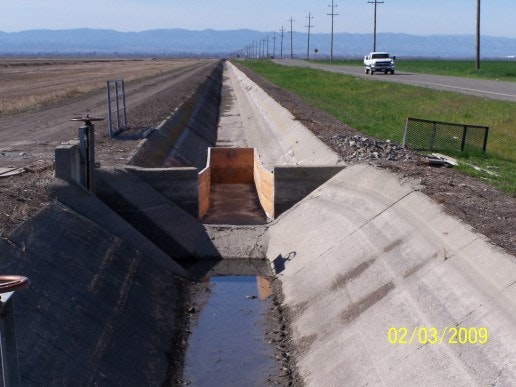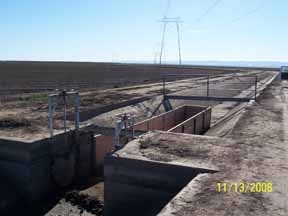Long Crested Weir

Distribution canals in the Eastern area of the District are concrete lined with low volumes and high velocities, making them difficult to manage with flash board check structures. Prior to the project, approximately 10 cubic-feet per second of additional flow was required throughout the irrigation season in order to ensurer sufficient flows were delivered to the farm turnout.

Previously, an adjustable flash board structure was located slightly downstream of each farm turnout. In order to maintain a stable canal water surface elevation, every time the flow in the canal was changed, boards were added or removed. The benefit to installing Long Crested Weirs in place of adjustable flash board structures is that for cost fluctuations in canal flow rate, the change in water surface elevation at the turnout remains nearly constant. This provides a constant flow to the irrigated field. It also substantially reduces labor and the chance of human error.

The same characteristic of the Long Crested Weir that makes it useful in canals for water level control eliminates the weir as a measurement device. Therefore, the District was required to add measurement methods at key locations throughout the conveyance system.

